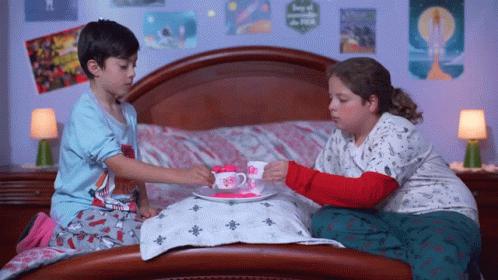October 1, 2023
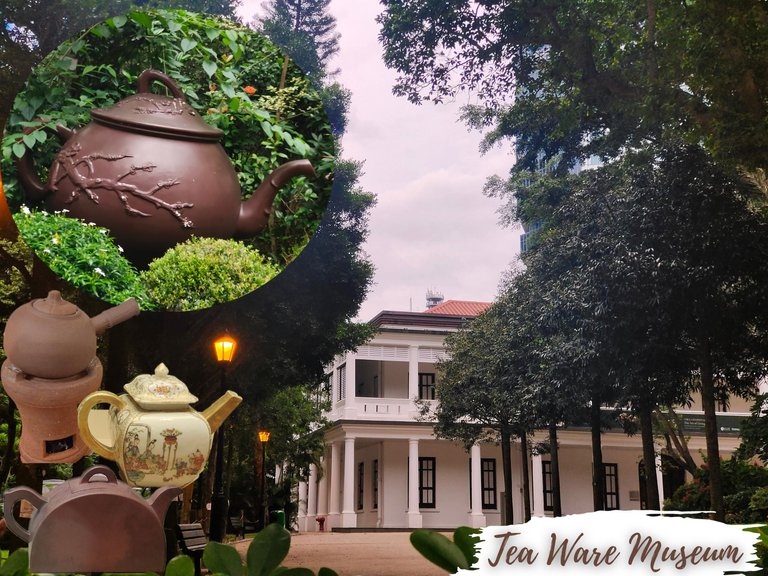 Photos mine. Edited in Canva
Photos mine. Edited in CanvaI've tried a variety of teas and learned about various tea preparations ever since I started working here in Hong Kong. But as of right now, I can only name a handful of teas without looking up the name.
From the old dynasty to the current generation, tea has been significant to Chinese society and their culture. It is a part of their regular meal that cannot be removed, and the correct brewing techniques obtain the rich flavor of tea.

Without tea ware, however, there isn't tea. Additionally, you will discover that making tea involves more than just adding hot water and tea leaves to a cup. If you ever find yourself in Hong Kong or the mainland of China, visit tea houses and dim sum restaurants, and you'll learn how to make tea the right way.
There is no doubt why there is a Museum of Tea Ware in Hong Kong. There isn't tea without tea ware. And Chinese people are into choosing good quality tea ware as well. This museum is located in Hong Kong Park premise in Central and branch of the HK Museum of Art. It's the oldest remaining Western-style architecture in Hong Kong from colonial times.
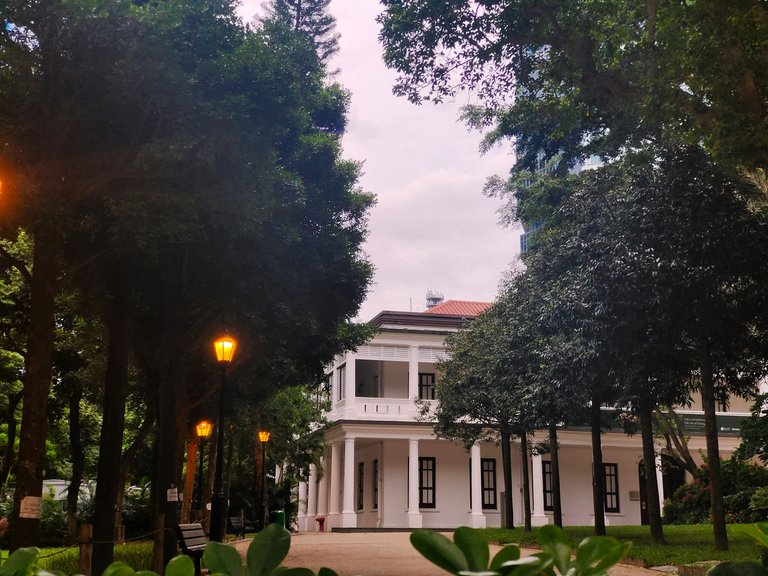
History Time:
Before this building became the Museum of Tea Ware, it was once a Headquarters House for the British military. This Headquarters House was completed in 1846, and the first to occupy the house was Major-General George Charles D'Aguilar. During World War II, the house was badly damaged but it was restored while retaining the original mid-19th-century style. In 1984, with some interior modifications, it was converted into the Flagstaff House Museum of Tea Ware. It was also listed as a declared monument in 1989. Source
 The Flagstaff House in different angle. It shows drawings of the eastern, northern, and southern facades of the house from 1846-1890.
The Flagstaff House in different angle. It shows drawings of the eastern, northern, and southern facades of the house from 1846-1890.The original Greek revival architectural style was retained after some restorations. There is another former Headquarter House in another part of this park which was revamped into a more useful facility.
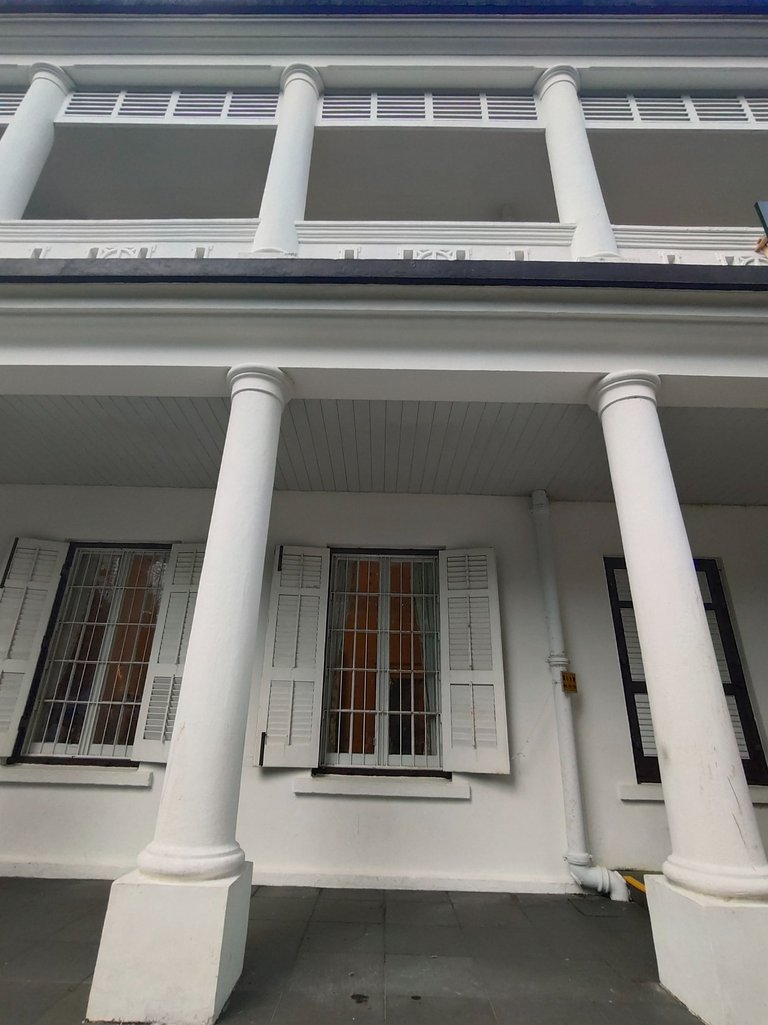
A giant teapot sculpture outside the Tea Ware Museum.
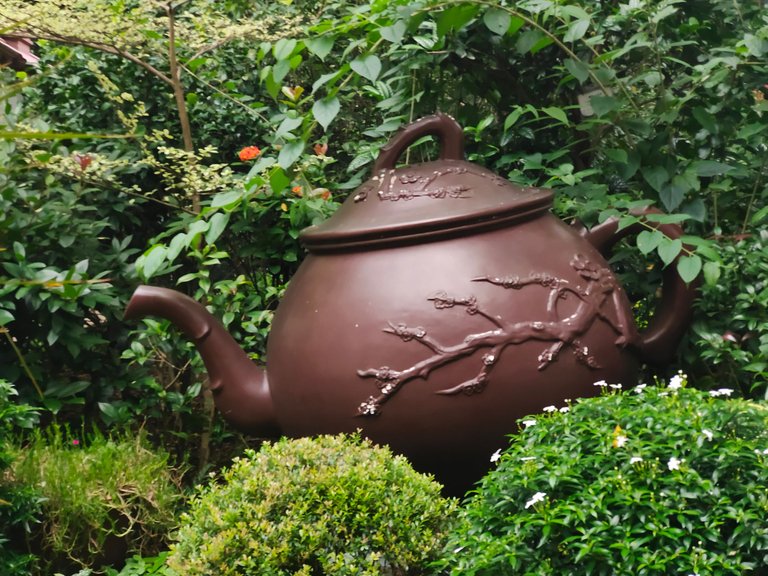
Resting spot or tea corner in the spacious yard in front of the museum.

The Interior was modified, so it can be used as a museum. There are a total of nine galleries in this museum, not including the playroom and gift shop.
Ground Floor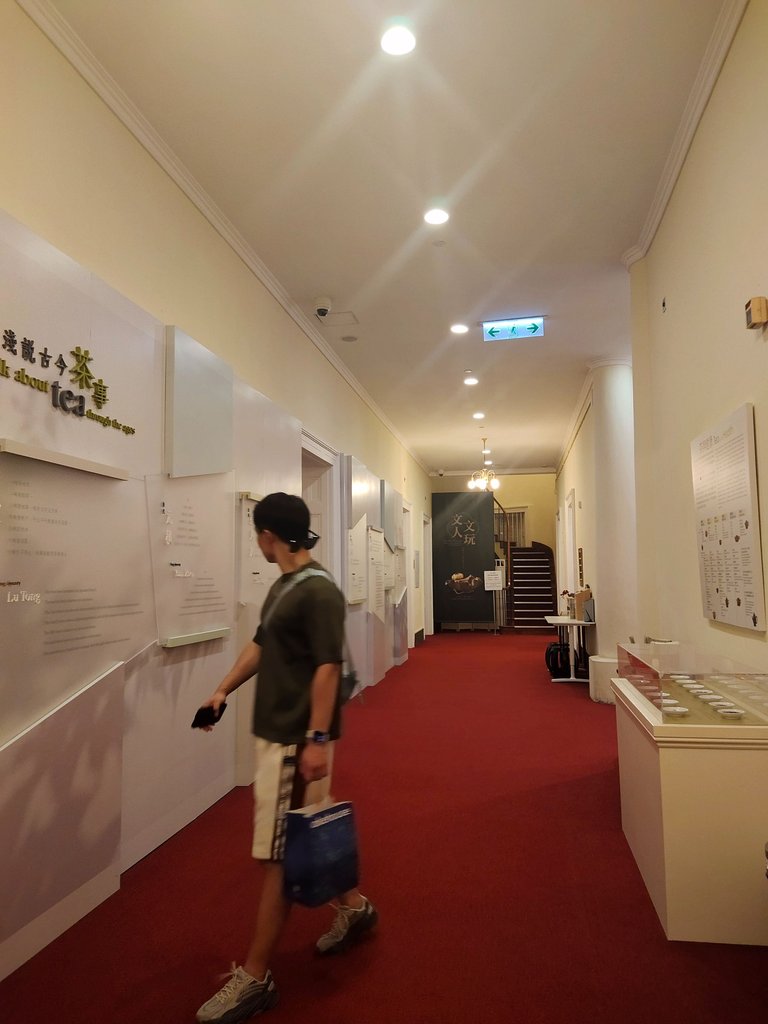 | First Floor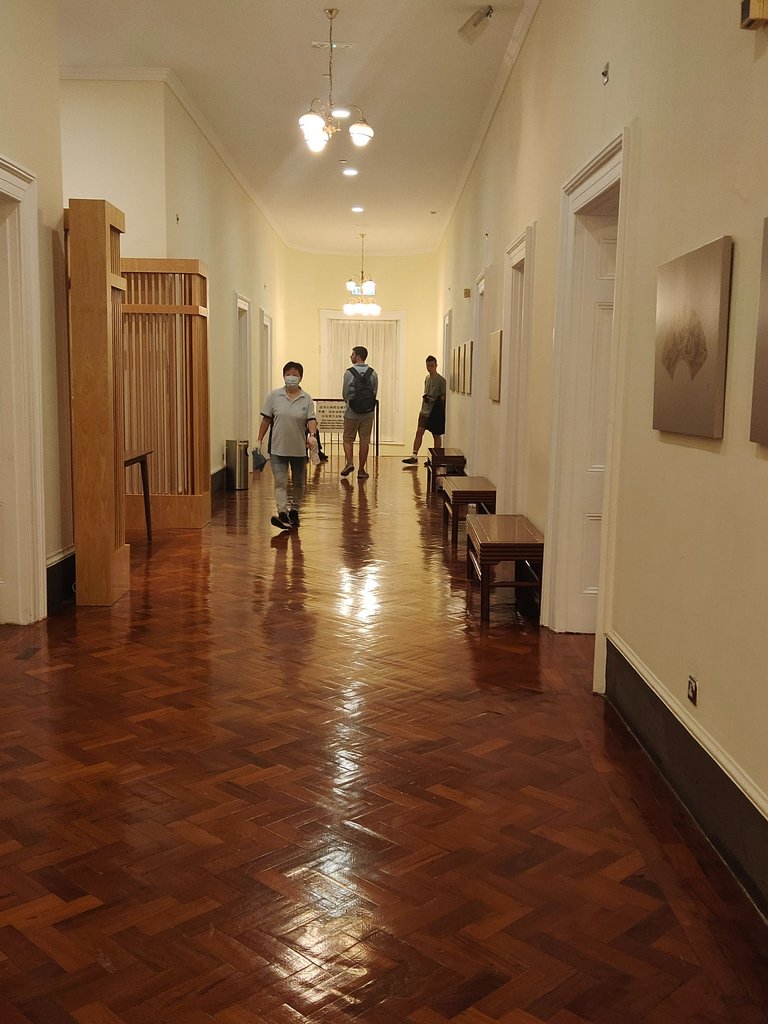 |
|---|
Floorplans then and now.
 | 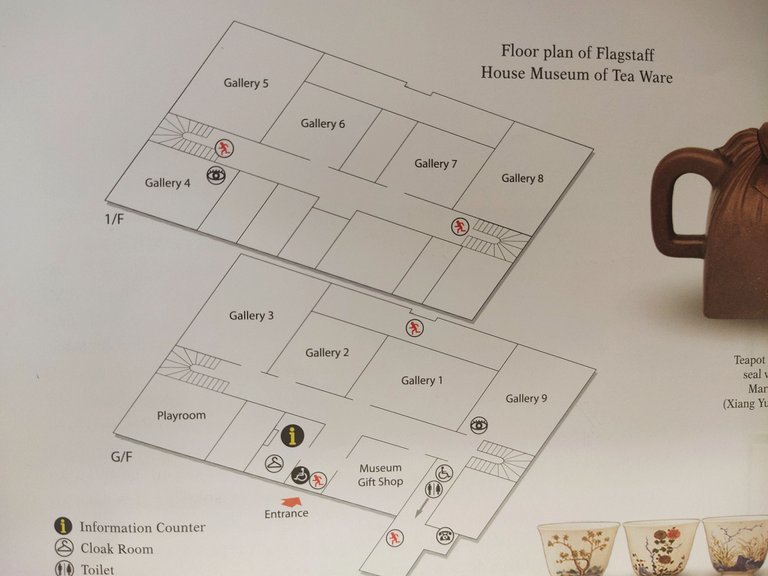 |
|---|
Before going inside different galleries, I checked the display of different kinds of tea located along the hallway of the ground floor. These teas are from different provinces of China, such as Pu'er tea, white tea, black tea, oolong tea, luan tea, and others. Among all the teas on display, I was only familiar with black, white, and oolong tea.
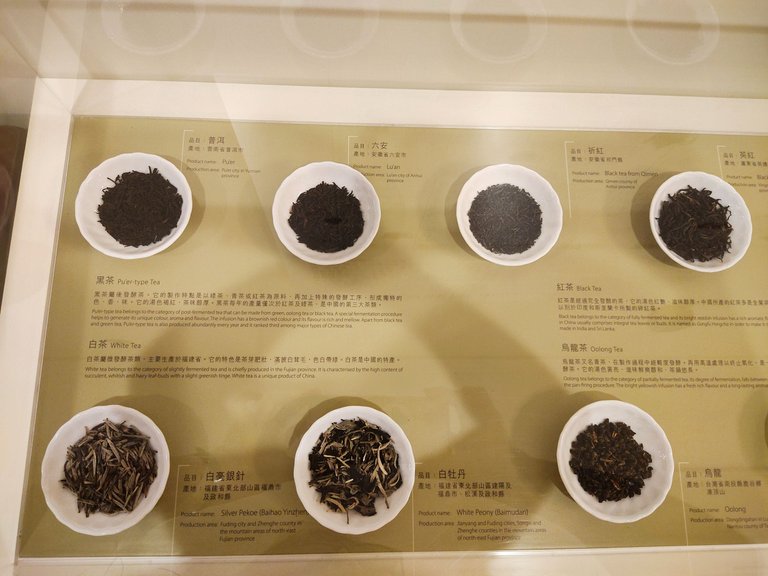
The ground floor has four galleries including an interactive room where videos of different information about the museum, and related stories to tea and tea ware are played.

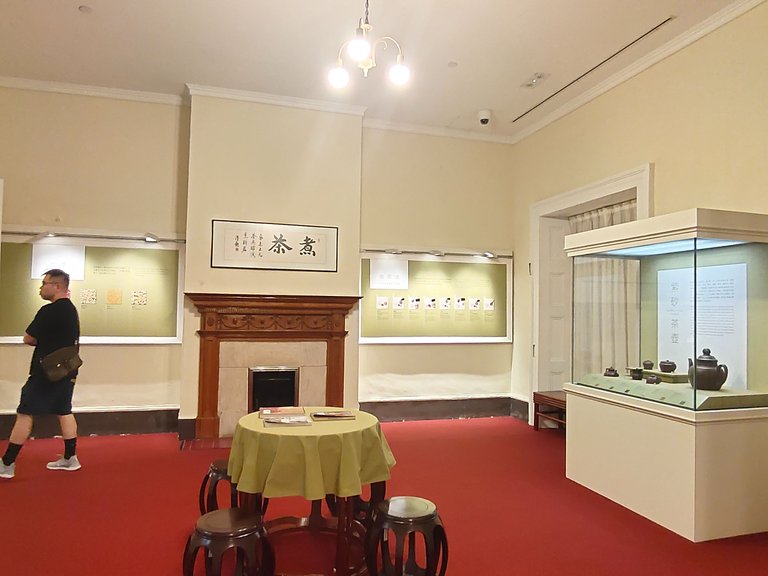
There is also a gift shop selling different teaware sets and different teas with good qualities. On the other end of the ground floor is a playroom where kids can play, and workshops are held.


The ground floor of the museum has a permanent exhibition called Let's Talk About Tea Through The Ages. This exhibition introduces different methods of preparing tea throughout China's history dating to the Tang Dynasty, Yuan Dynasty, Song Dynasty, Ming Dynasty, and Qing Dynasty.
These are tea vessels for gongfu tea. You will see this kind of vessel in Chinese dim-sum restaurants.

Teaware from Yuan Dynasty
It was during this period when tea manufacturers invented methods of adding flowers to scent tea. The tea also became part of a meal and became a practice in serving tea together with what they call dim-sum today.
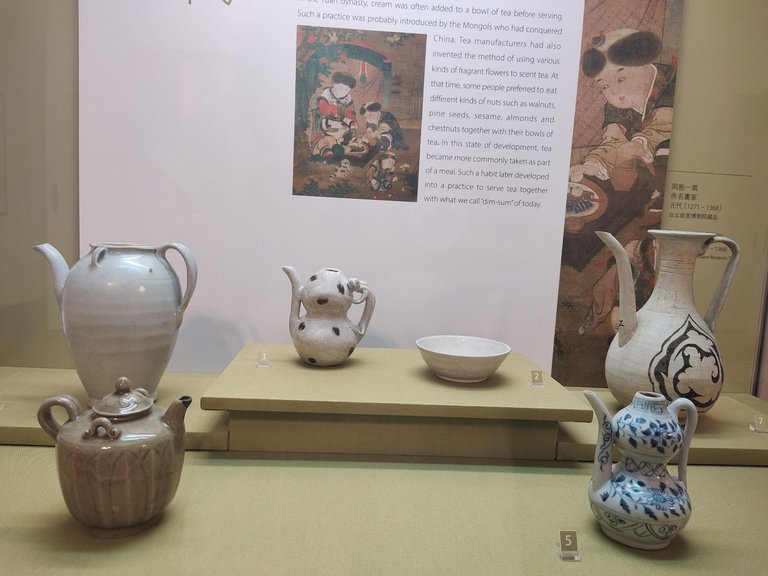
Teaware from Ming Dynasty
These are glazed and underglaze teapots. During this period the method called the Steeping Tea Method was introduced. Teapots also become smaller and smaller for a reason.

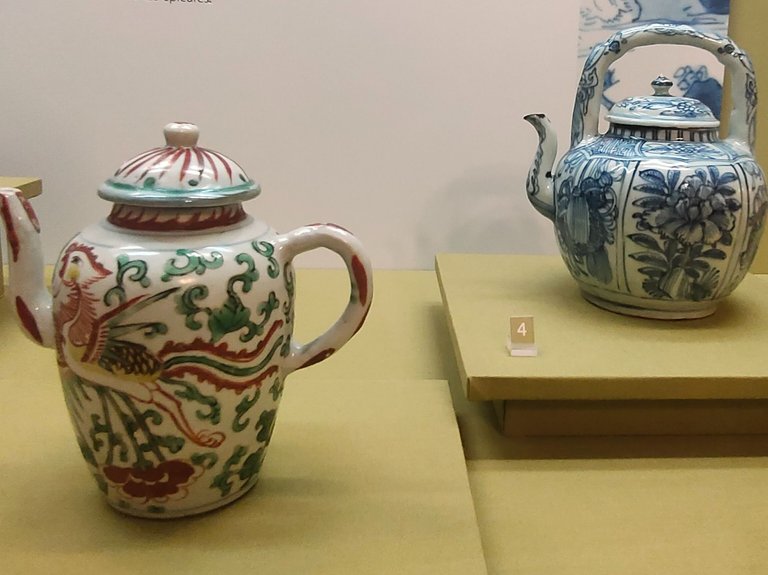
Do you know why teapots are small?
In the photo below is the Steeped Tea preparation method. During the Ming Dynasty, people usually used big pots for steeping teas. But they later discovered that the longer the tea is steeped, the more bitter its taste. So teapot size becomes smaller and smaller so that the last few cups would still be as fresh as the first ones.
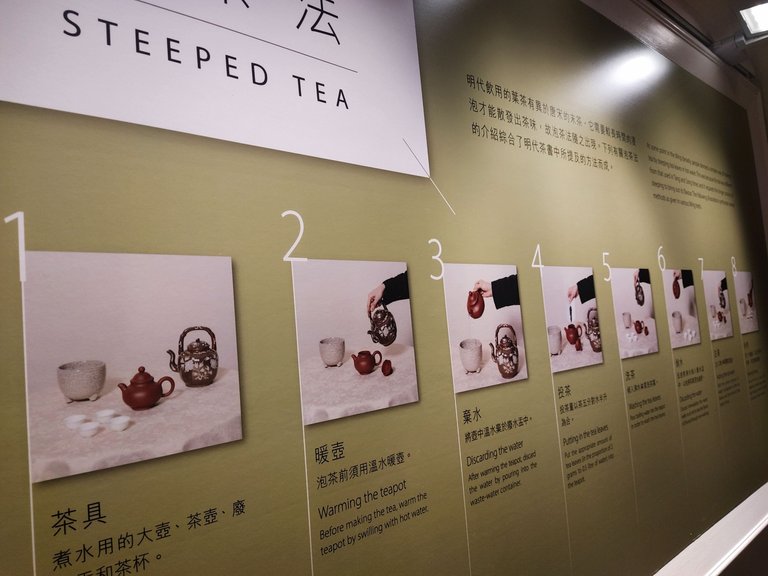
Black-glazed tea bowls, and purple clay teapots which are unique from the Song Dynasty

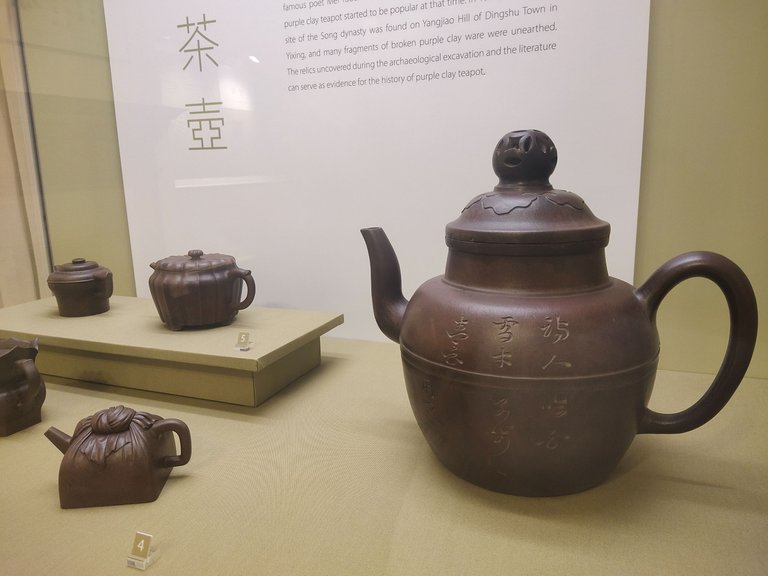
These teaware are from the Qing Dynasty with prettier designs and rustic colors.
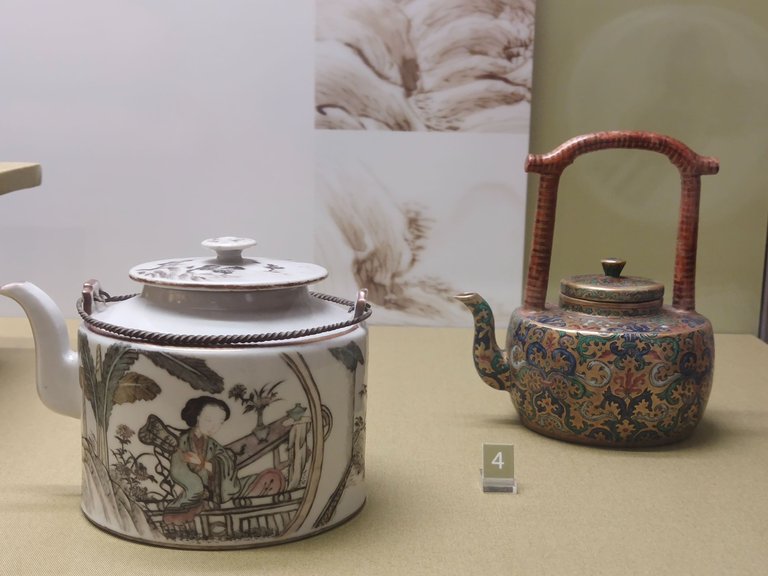
You'll notice covered tea bowls in this period. It was ideal to serve tea for one person. More variety of tea was also discovered during this period including the oolong and black tea.
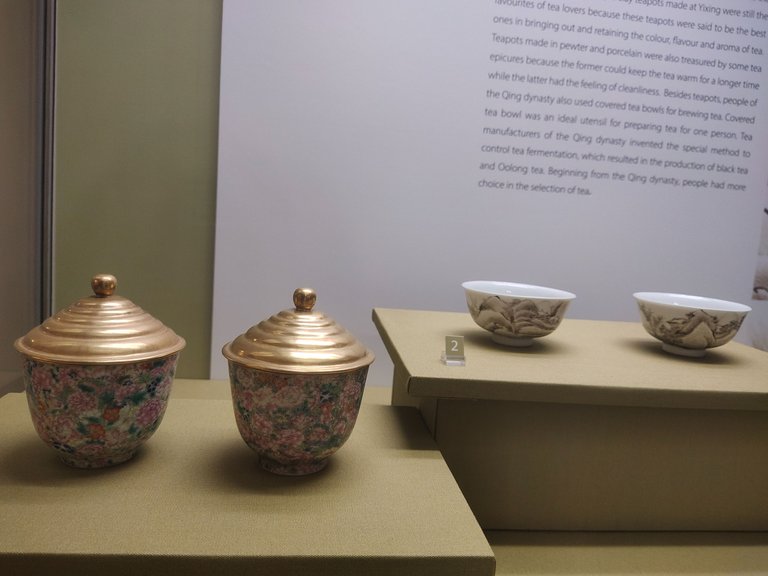
A sculpture of the most outstanding craftsman of the nineteenth century is another attraction, along with his unique teapot miniature.

Paintings, calligraphy, and engraving are applied in this teaware, making teaware more unique and attractive.
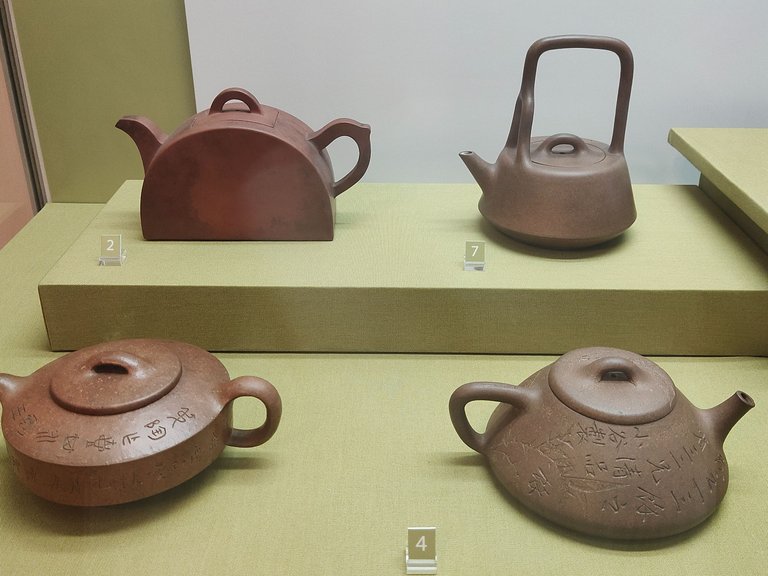
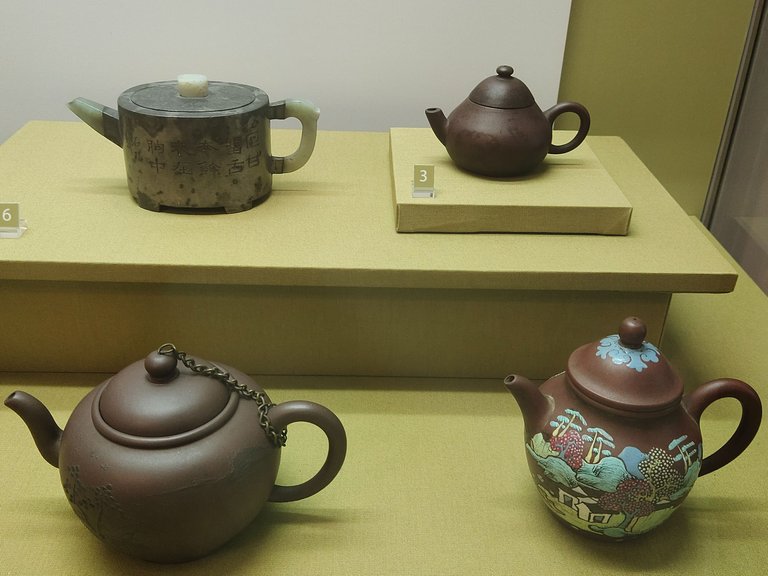
Teaware from the Qianlong Emperor period is more fancy with enamel decoration and seems to have been made for imperial use only.
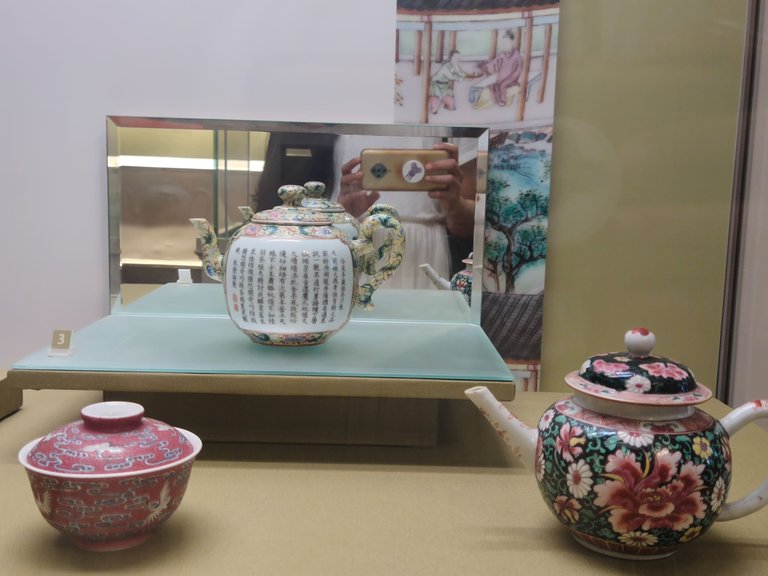
And these are underglaze tea cups from the Qing Dynasty. I took it from a not-so-good angle. If you will notice, there are 12 tea cups here. The enamel designs are different flowers representing each month of the year. I never heard about these flowers of the months, but I guess it is only in Chinese culture.
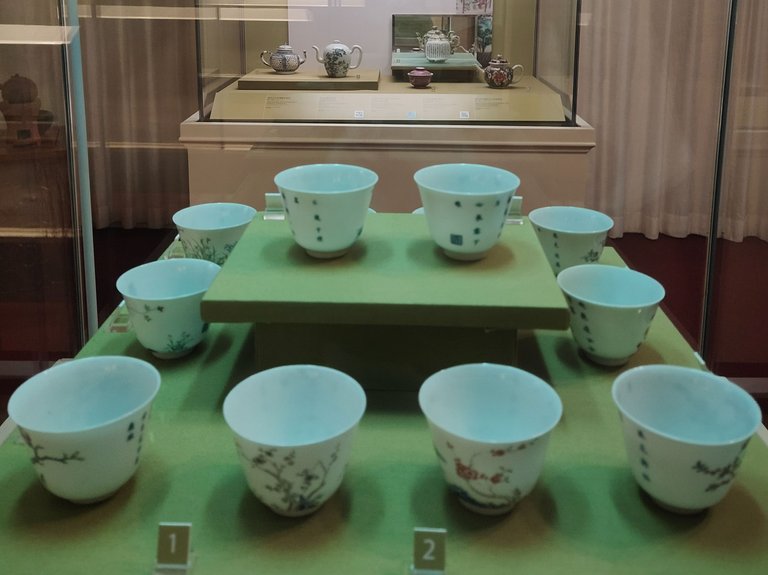
In this corner, they promote purple clay artistry. These teapots are recent donations from local and overseas potters.
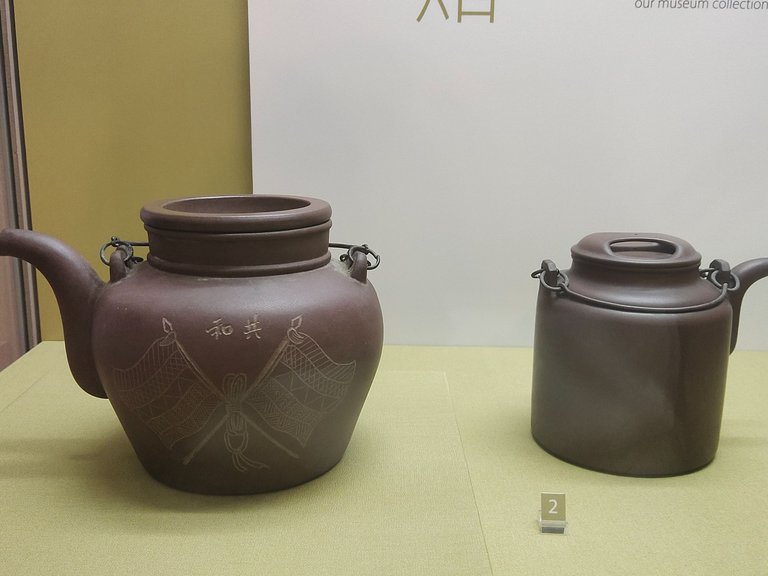
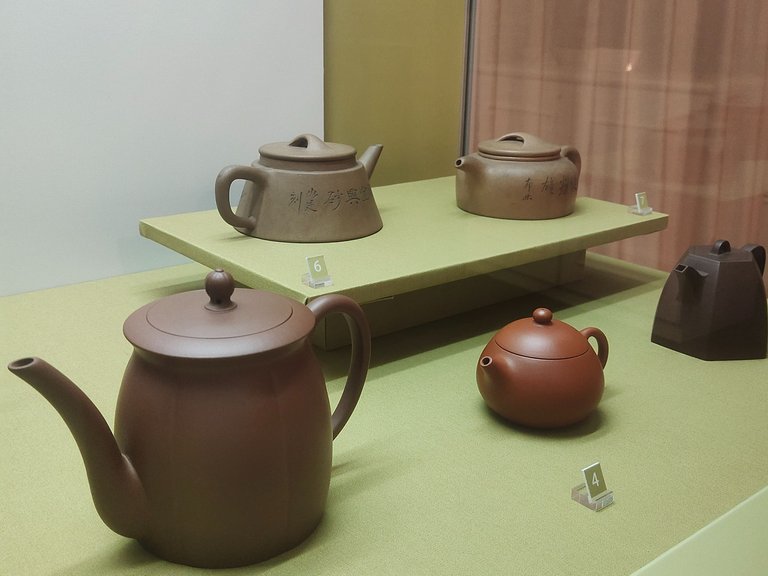
Now if you are interested in knowing more about teaware and teas, there are different books to read in the museum perfect for research references.
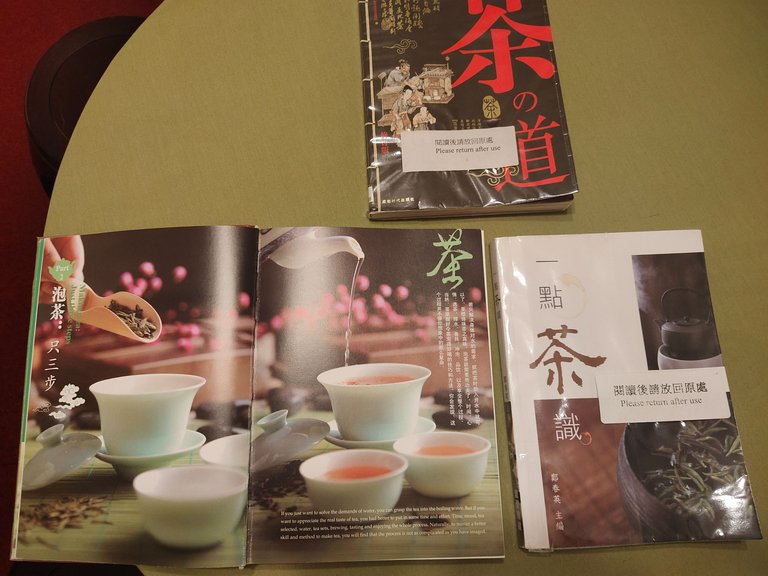
Note that information stated here about the Tea through the Ages exhibition was taken from the walls of information in different galleries.
Another museum booklet has been added to my collections. This contains information about the history of the museum.

My visit to the Museum of Teaware allowed me to learn different tea preparation methods and distinguish teaware designs from different periods. So I can say that it was an educational visit. You'll notice that I only tackle the ground floor of the museum. You'll see the first floor in my next blog. See you there and learn more about Chinese history!
Thanks for your time.
(This was posted back when I was still in Hong Kong. I stop by to say Happy Power Up Day. Don't forget to power up!)
(All photos are mine)

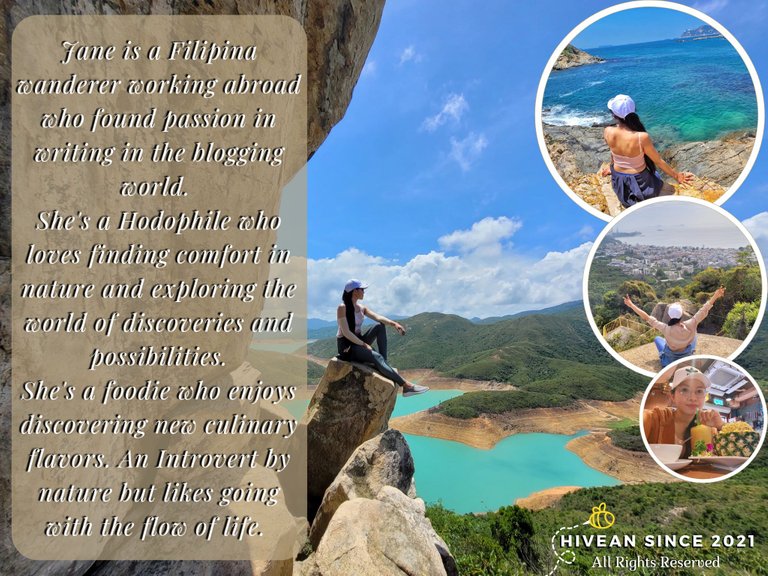
Join her on her quest for self-discovery and wanderlust. If you like her content, don't hesitate to upvote, drop a comment, reblog, and follow for more wonderful adventures. |
|---|
You can also reach me on my socials and let's be connected:







